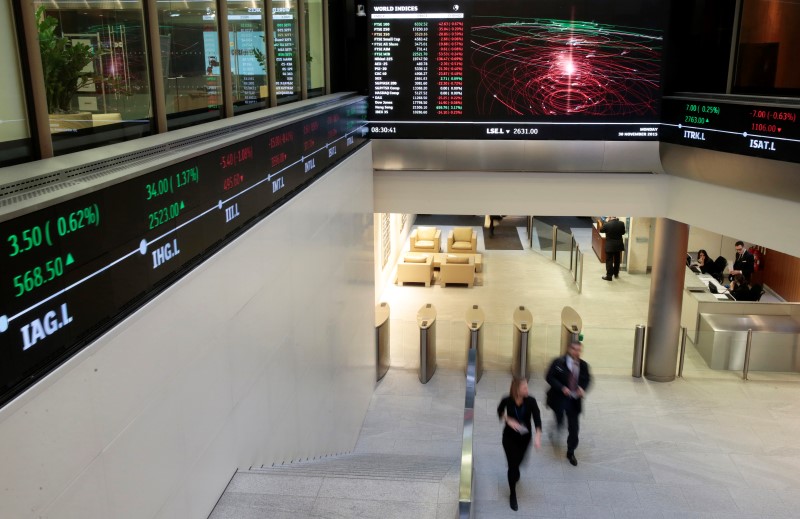By Chuck Mikolajczak
NEW YORK (Reuters) - A climb in oil prices and a surge in healthcare stocks helped global equity markets advance on Wednesday, while the U.S. dollar hit a fresh 17-month low against the yen ahead of minutes from the most recent meeting of the Federal Reserve.
Stocks on Wall Street and in Europe bounced from declines of more than 1 percent in the prior session, led by energy and healthcare sectors.
The healthcare sector continued to garner attention in the wake of the decision by Pfizer (N:PFE) and Allergan (N:AGN) to scrap their $160 billion merger deal. The healthcare sectors (SPXHC) (SXDP), were the top performing groups in both the United States and Europe, with each up more than 2 percent.
"There is an interest in growth vehicles in healthcare and people are speculating on where Allergan is going to go now," said Jim McDonald, chief investment strategist at Northern Trust in Chicago.
"They could look for more traditional acquisitions as opposed to inversion strategies."
Investors' attention was firmly on the release later on Wednesday of the minutes from last month's Federal Reserve monetary policy meeting and any clues on how many U.S. interest rate hikes might be expected this year, following some mixed signals from some of the Fed's officials.
The Dow Jones industrial average (DJI) rose 86.29 points, or 0.49 percent, to 17,689.61, the S&P 500 (SPX) gained 15.44 points, or 0.75 percent, to 2,060.61 and the Nasdaq Composite (IXIC) added 55.81 points, or 1.15 percent, to 4,899.74.
MSCI's index of world shares (MIWD00000PUS), rose 0.73 percent. The pan-European FTSEurofirst 300 share index (FTEU3) closed up 0.76 percent after suffering its biggest drop in nearly a month on Tuesday.
The dollar continued to weaken against the yen after comments from Japanese Prime Minister Shinzo Abe that countries should avoid trying to weaken currencies with "arbitrary intervention."
The dollar was down 0.57 percent
The dollar index (DXY), which measures the greenback against a basket of six other major currencies, was last down 0.28 percent at 94.363.
But as for much of the last year, oil continued to have an outsized influence on most of the market moves.
Crude prices extended their rebound. U.S. inventories unexpectedly fell from record highs last week as refineries continued to hike output and imports fell. Investors also gauged the possibility of an output freeze by producers.
Russian sources told Reuters Russia believed $45 to $50 per barrel was an acceptable price for the oil market to re-balance and said there were now discussions on how long to freeze production and how to monitor it.
Brent crude futures (LCOc1) jumped 4.9 percent to $39.74 per barrel, off a one-month low of $37.27 hit on Tuesday, while U.S. crude futures (CLc1) surged 4.8 percent to $37.62, the biggest percentage rise since March 7.

In bond markets, the bounce in oil and modest lift in risk appetite prompted investors to sell safe-haven government debt ahead of the Fed minutes with benchmark 10-year Treasuries (US10YT=RR) down 13/32 in price to yield 1.7706 percent.